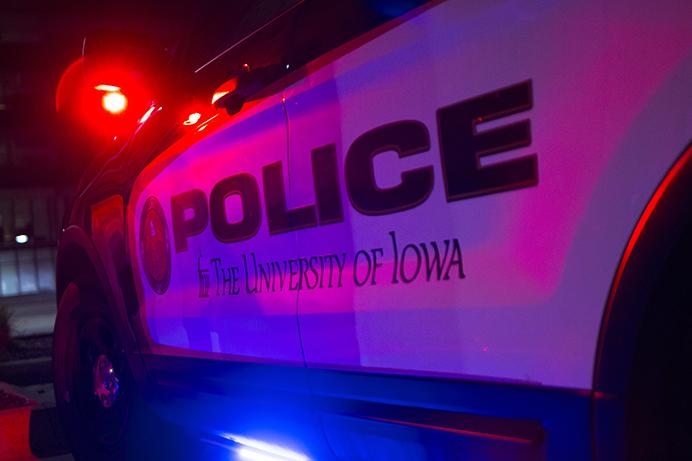Newby: Missing persons reports persist and cannot go unnoticed
Thousands of missing persons reports arise in a year, but often go unnoticed. It’s important that the public continues paying attention to the names and faces of those who have vanished.
A University of Iowa Police Department vehicle is pictured.
April 11, 2019
The end of 2017 brought nearly 90,000 active missing-person reports, according to the FBI. And in a 10-day time frame in July 2018, 48 Iowa juveniles had reportedly gone missing.
Near the end of the summer, a social-media post emerged expressing the urgency and depravity of the number of missing persons — and specifically, people between the ages of 13 and 20. The post received thousands of responses.
The attention of communities and various media outlets were drawn to the gripping number while different news platforms arose, disputing the number as a misread on data and statistics.
Even the Department of Public Safety stepped forward in an attempt to correct perspectives on the numbers being publicized among social-media platforms.
According to USA Today, the number included people who had not been kidnapped or disappeared during an ordinary day — but had simply run away from home, and more than that, contributed to the astounding number as children who had run away from home a number of times, each time a new entry in data.
While organizations were quick to wave off the intimidating number of missing children, the fear still rang true enough and near enough to home to cut through the thickening debate over how frightened communities should be.
The point of discussion is that children are missing — whether they’ve chosen to run away from home, been grabbed in the middle of an afternoon on their way home from the bus stop, or vanished in the abyss of crowded hotel lobbies.
RELATED: Baller: UI Greek Life is pushing Red Watch Band training to teach life-saving skills
Thousands of children are missing and efforts need to be exhausted, relentlessly, in seeking to find the number of missing persons. Regardless of how they disappeared, whether they wanted to or not, there needs to be a quickness in responding with action rather than debate or discussion.
According to the Des Moines Register, just last week a boy was found in Kentucky claiming to be Timmothy Pitzen while recounting in vibrant detail the kidnapping of the then 6-year-old boy, who has been missing from Illinois for nearly eight years.
DNA revealed that he is not Pitzen, he is instead Brian Michael Rini, a 23-year-old convicted felon from Medina, Ohio.
While officials are unsure why he attempted to claim the missing boy’s identity, the family of Timmothy was devastated, sharing with media that they felt like they were back to ground zero.
Yet authorities were quick to assure people that the search for Timmothy was not over — and that they would continue with their efforts in finding him. Aurora police continue leading the investigation with the assistance of the FBI when needed.
Timmothy is one of tens of thousands of children who have gone missing in the last 10 years. And while law enforcement increases in diligence for the search of the missing persons cases that flood counties across the country, it’s imperative that communities continue to remain aware.
It’s important that the increasing number of people who have vanished, statewide or nationwide — whether they’ve run away or been taken — have the attention of the public, so that their absences do not go unnoticed and the search for them can persist.






